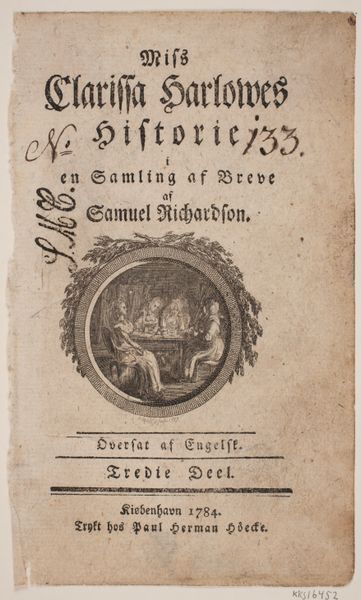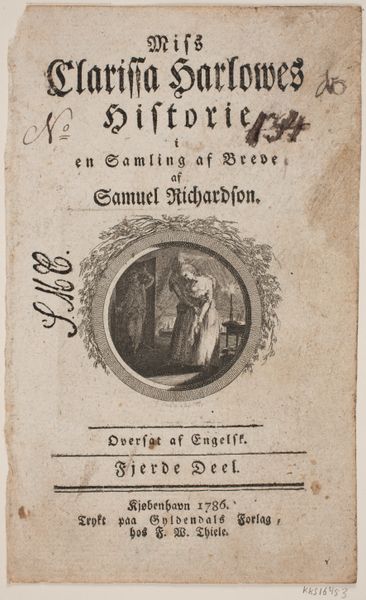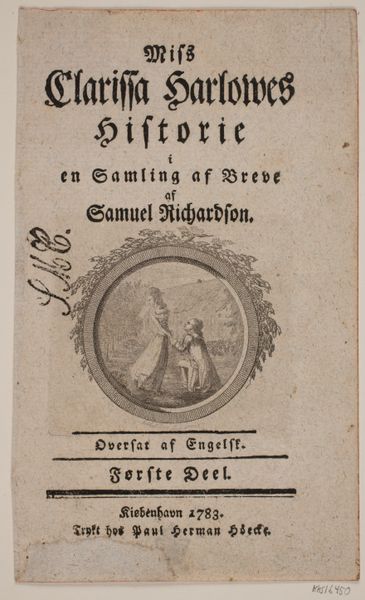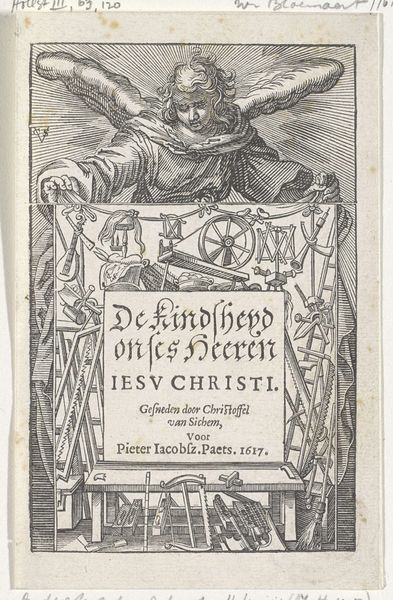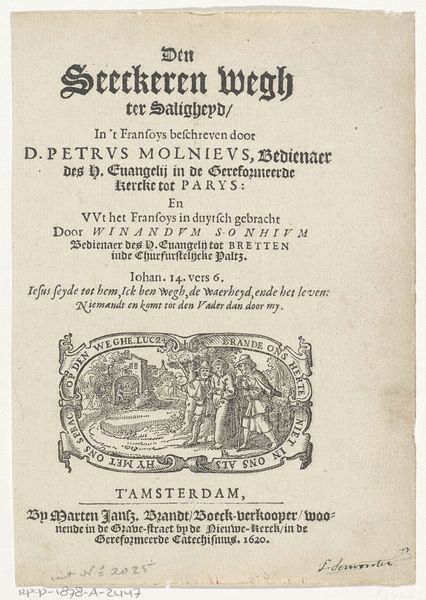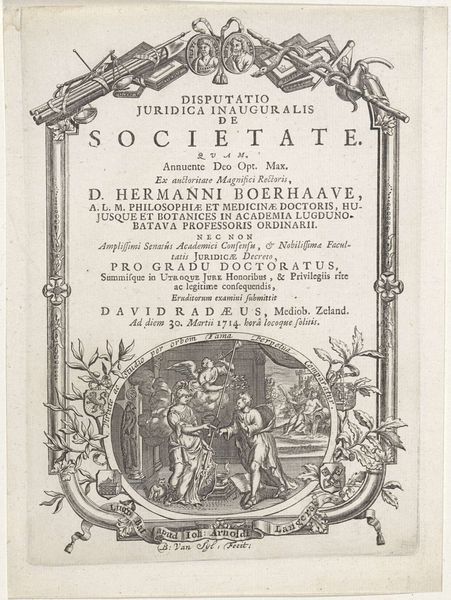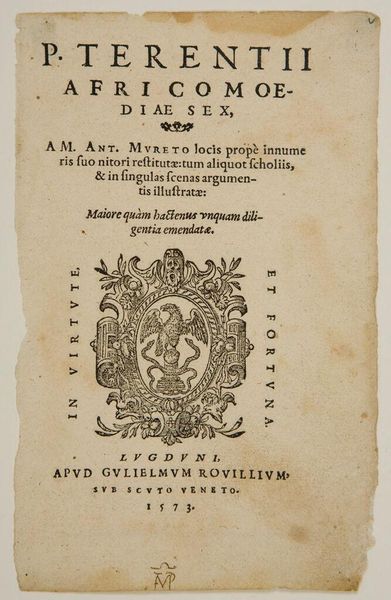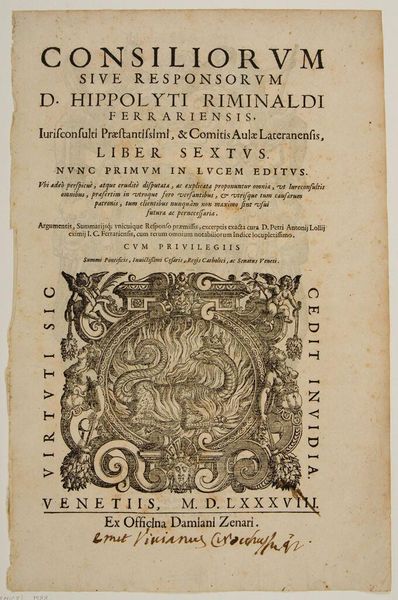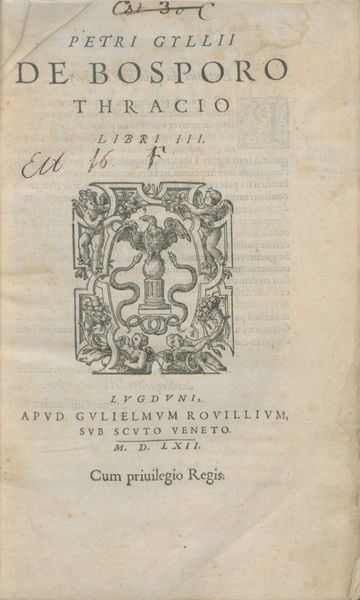
Titelblad med vignet til S. Richardson: "Miss Clarissa Harlowes Historie", syvende del 1783
0:00
0:00
Dimensions: 170 mm (height) x 102 mm (width) (bladmaal)
Curator: Let’s turn our attention to this rather evocative title page and vignette from 1783. The full title reads: "Title page with vignette for S. Richardson: Miss Clarissa Harlowe's History, seventh part," created by Georg Christian Schule. Editor: Immediately, I sense an almost gothic melancholy about it. The monochromatic print, the scene framed within a wreath…it gives a feeling of intimate tragedy, a quiet, enclosed despair. Curator: I find the framing quite interesting. Consider the circular wreath around the scene. Its very geometry implies a totality, a contained narrative, drawing the eye directly into the drama. Note also how the dark hatching creates a real sense of depth despite the medium's limitations. Editor: Precisely! It draws me into this story. We see, presumably, Clarissa in what looks to be her final moments. There's a figure—perhaps a servant—attending to her. But it’s not just a formal depiction, but the very visual metaphor for the constricted role of women within 18th-century societal constraints. Her identity defined by her relationships with men... Curator: An interesting viewpoint, one that acknowledges a possible interpretation but, visually, the contrast between the darker areas that make up the drapery, the lighter faces, creates an undeniable sense of visual tension, mirroring the inner turmoil the narrative implies. And note how the artist renders the different textures, capturing the play of light on the bedsheets... It gives everything a sense of heightened reality, as the etching, lines, form and structure blend with a Romantic sensibility. Editor: While acknowledging its aesthetic features, this also reminds us that even within domestic spaces, there were very definite societal power structures. Schule doesn't just present a death scene, but the consequences of a rigid social structure on women’s lives. Curator: Agreed. The image's power clearly lies in its visual economy. In essence it invites closer observation, in order to interpret the rich story and deep-seated history in its intricate layers. Editor: A moment of observation, indeed: visual art both documenting and becoming an inextricable element of the literary world.
Comments
No comments
Be the first to comment and join the conversation on the ultimate creative platform.
